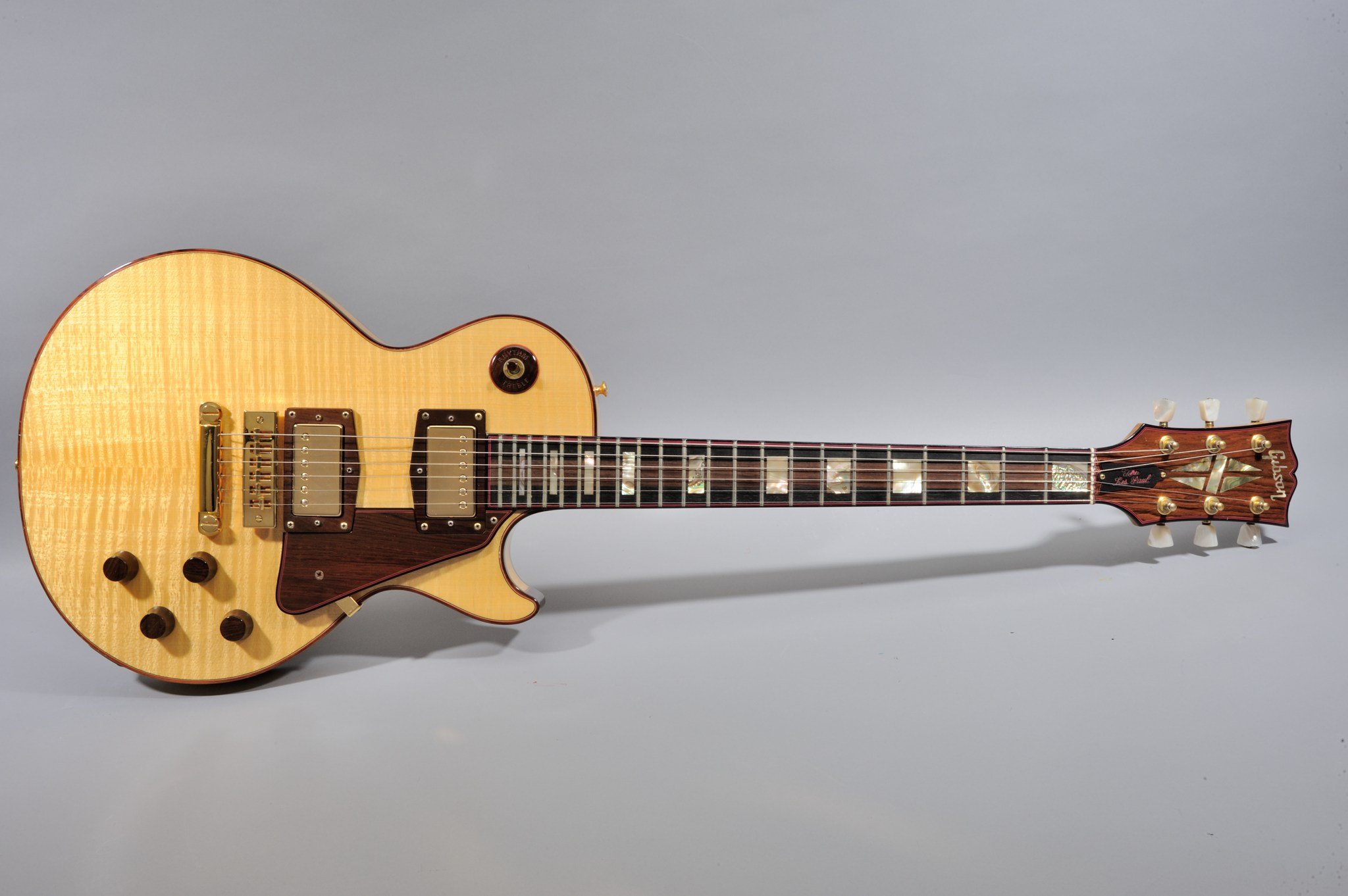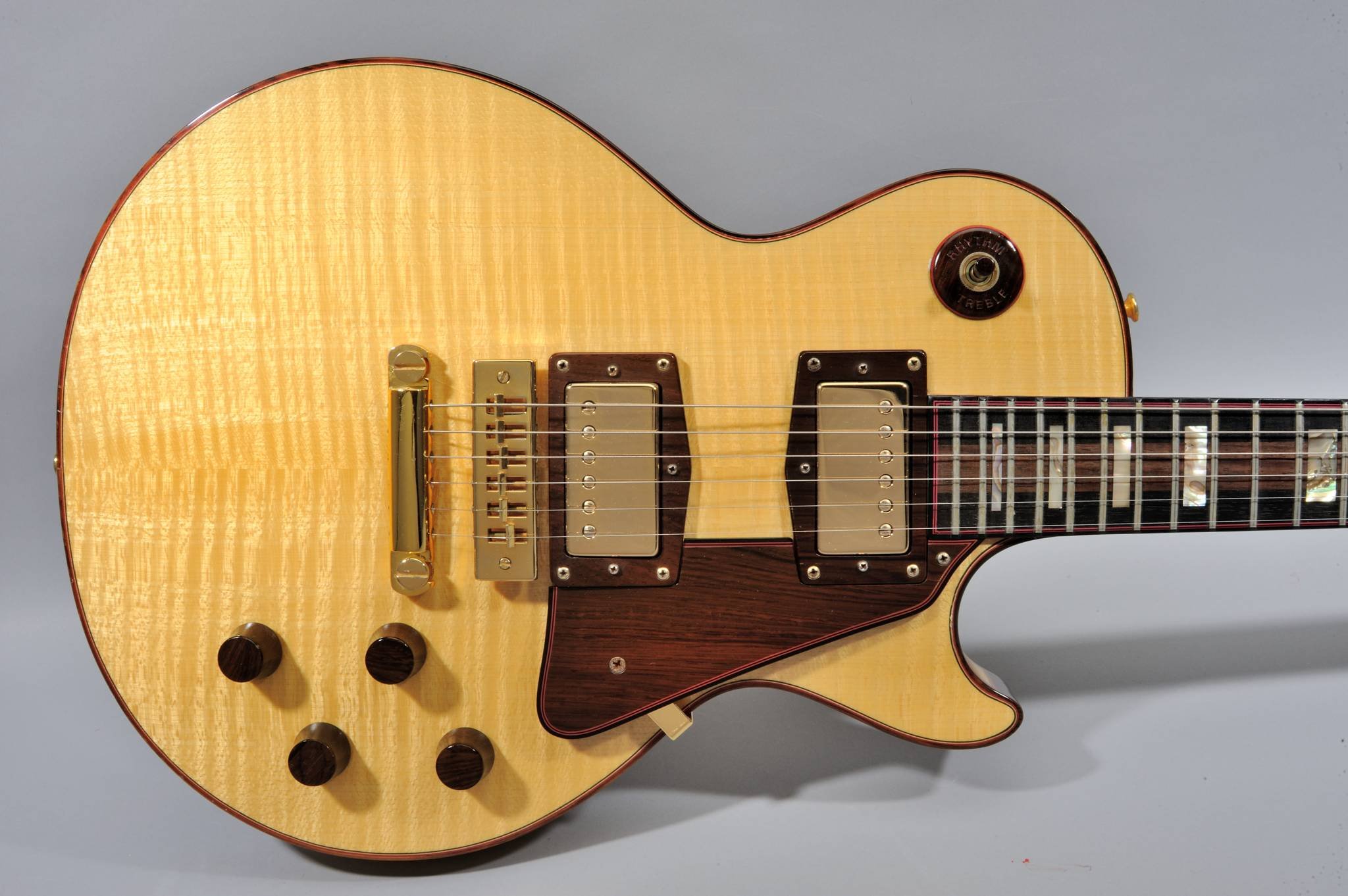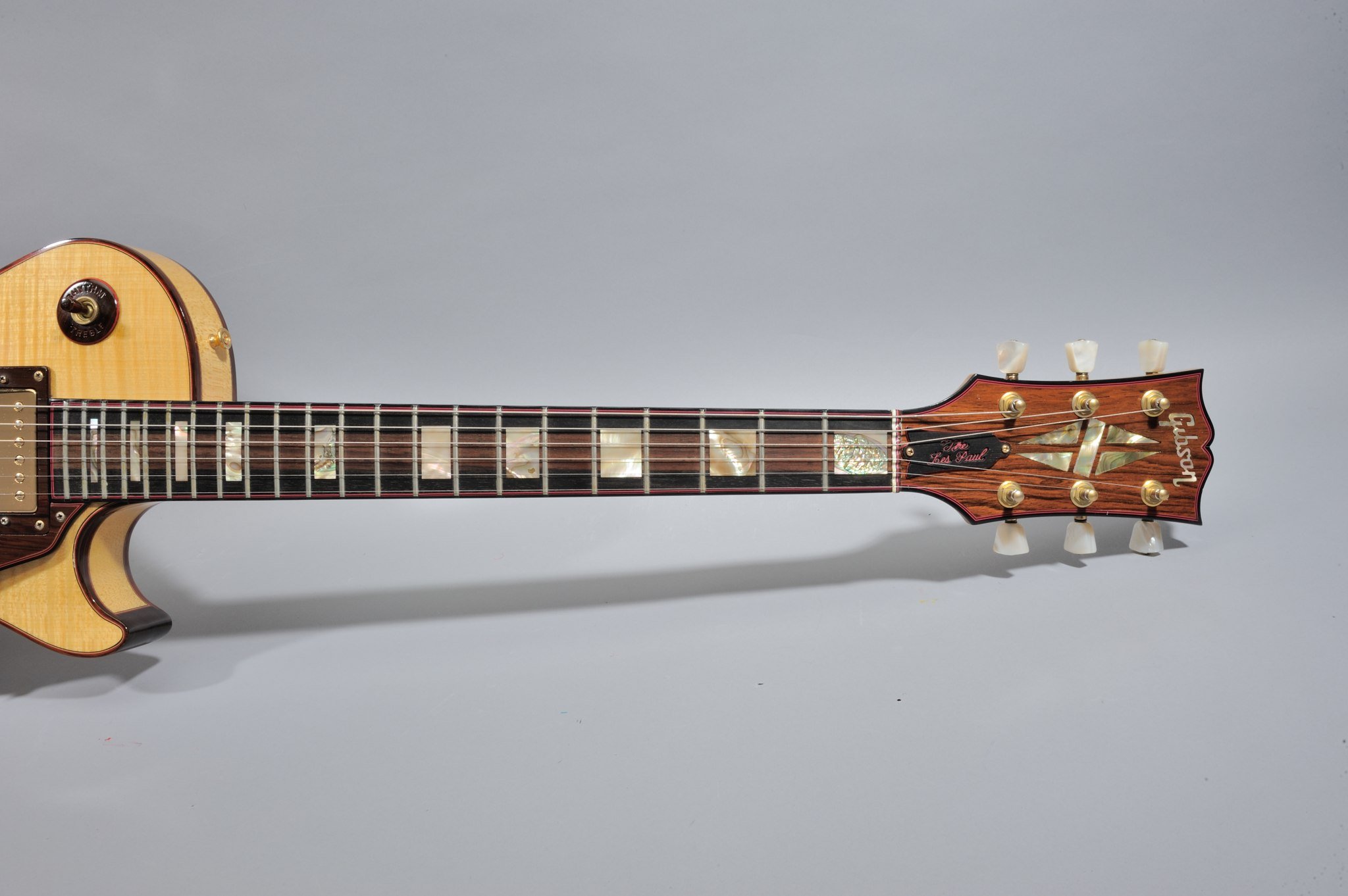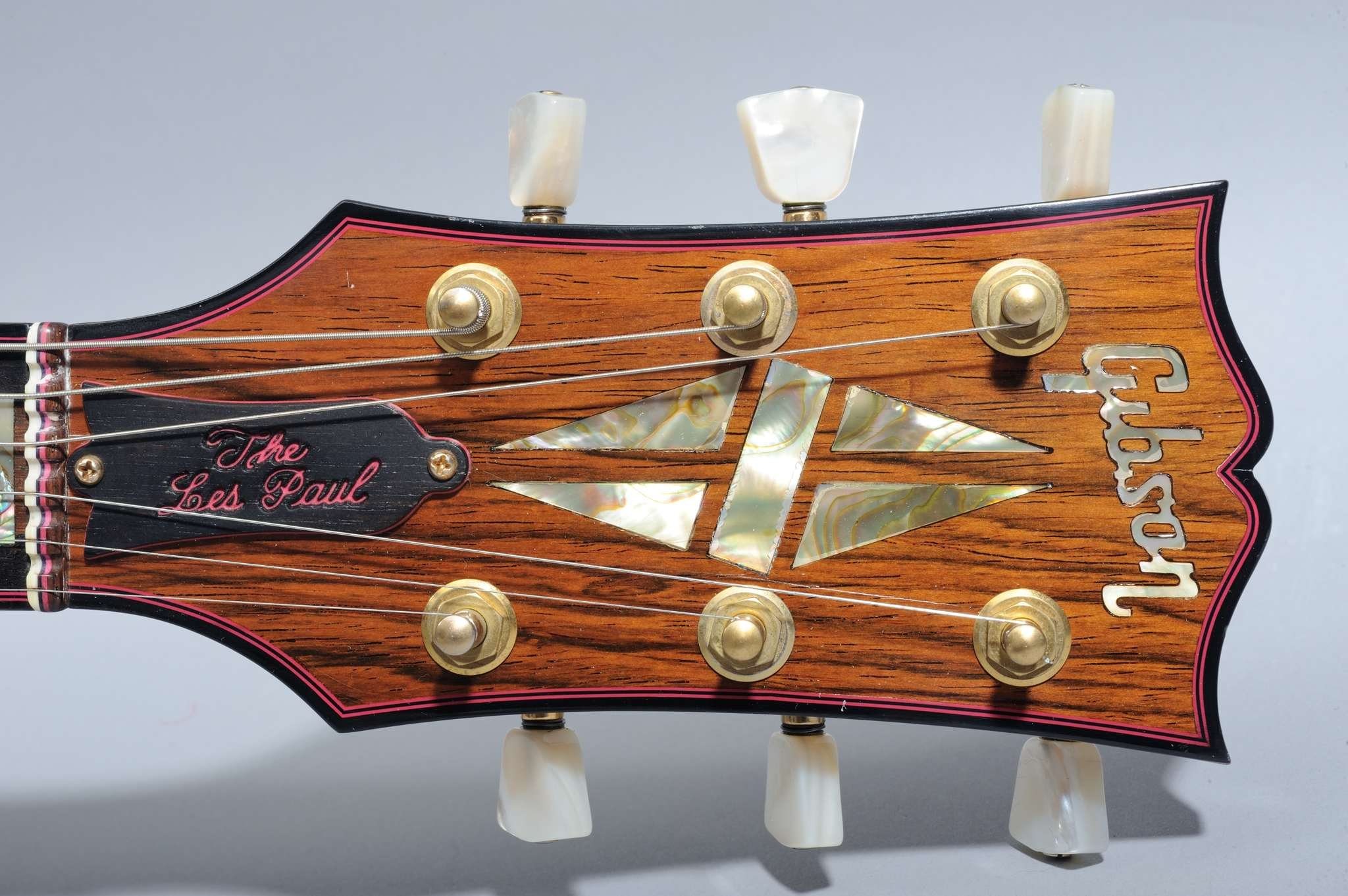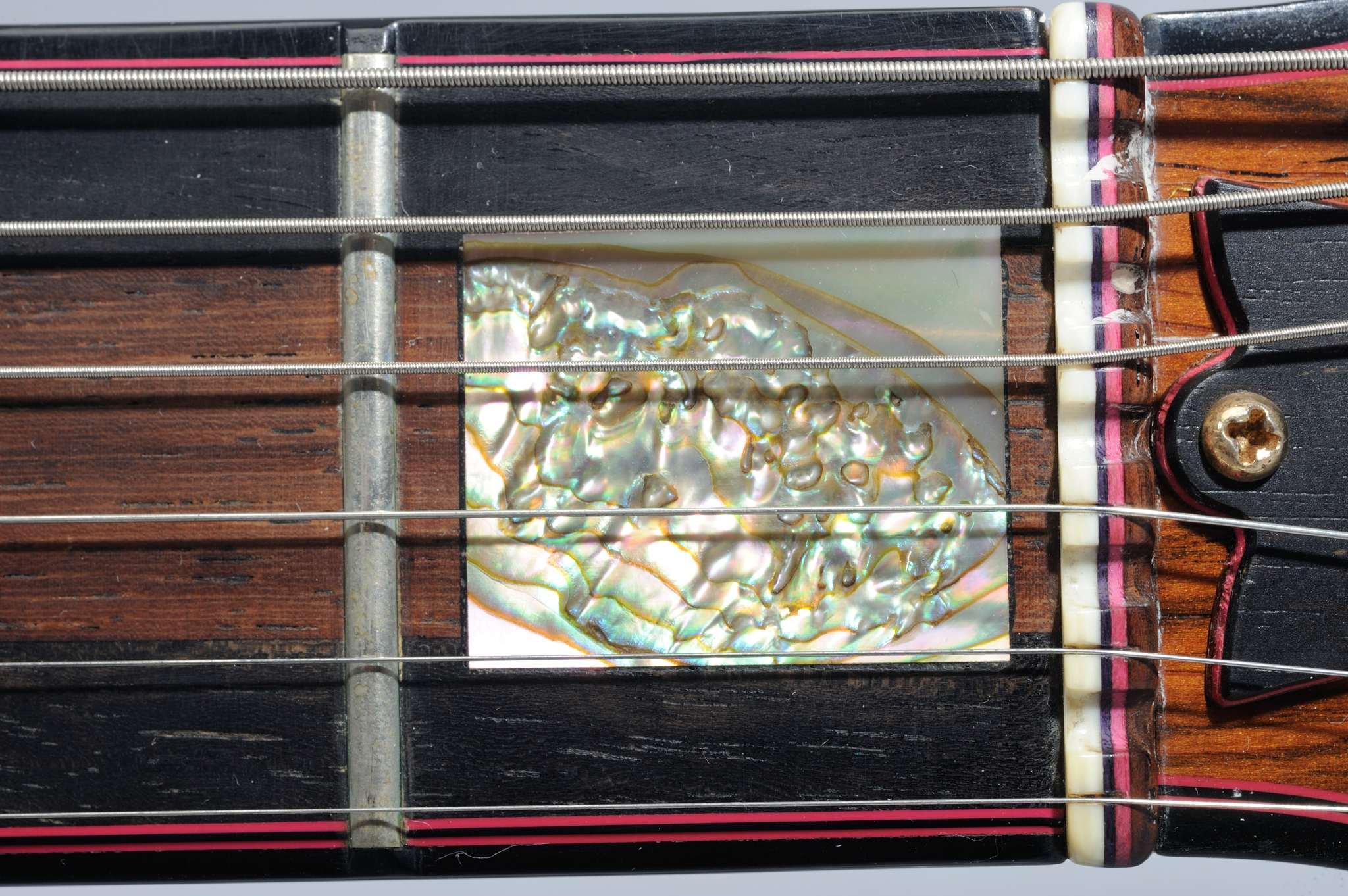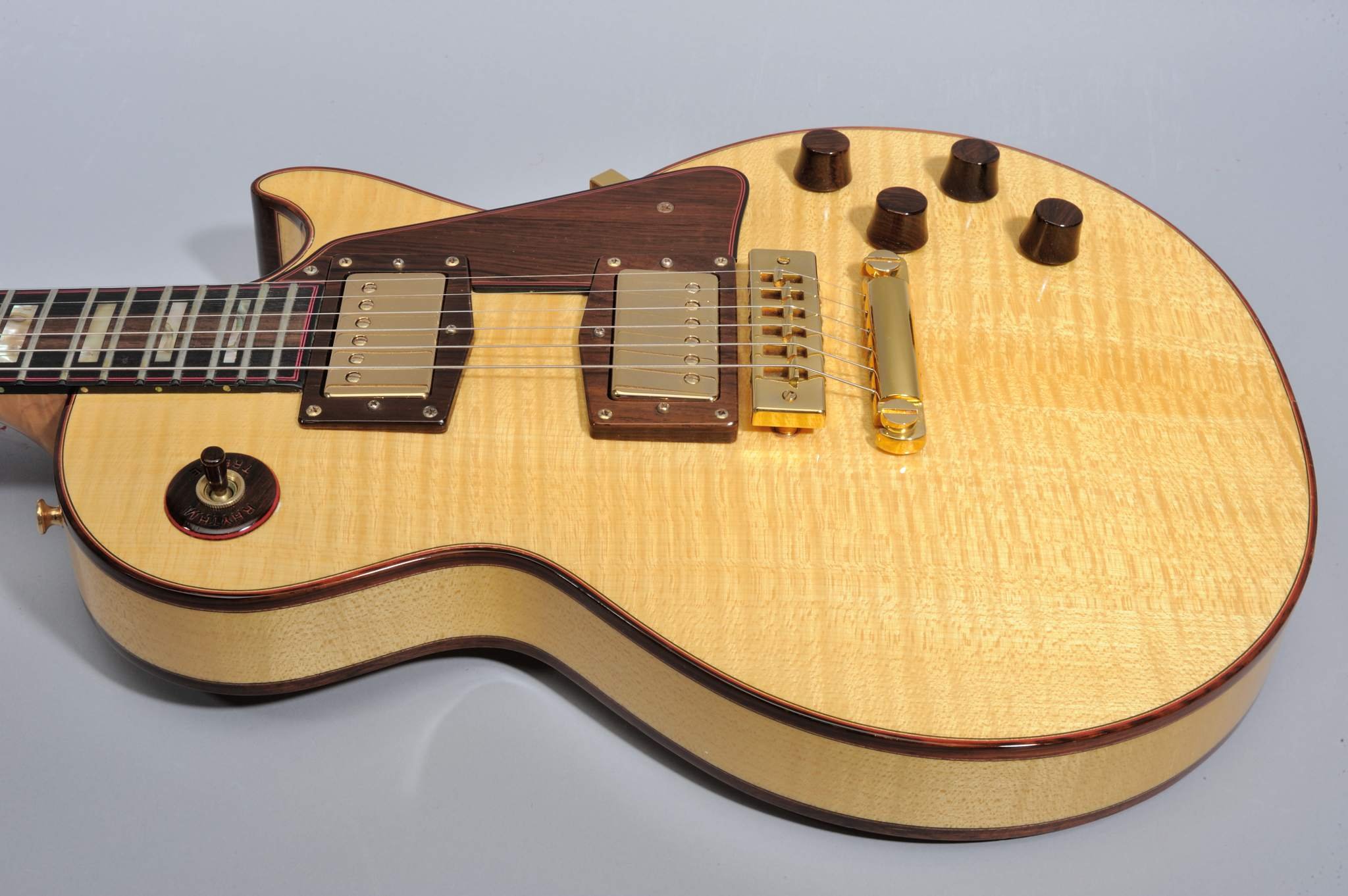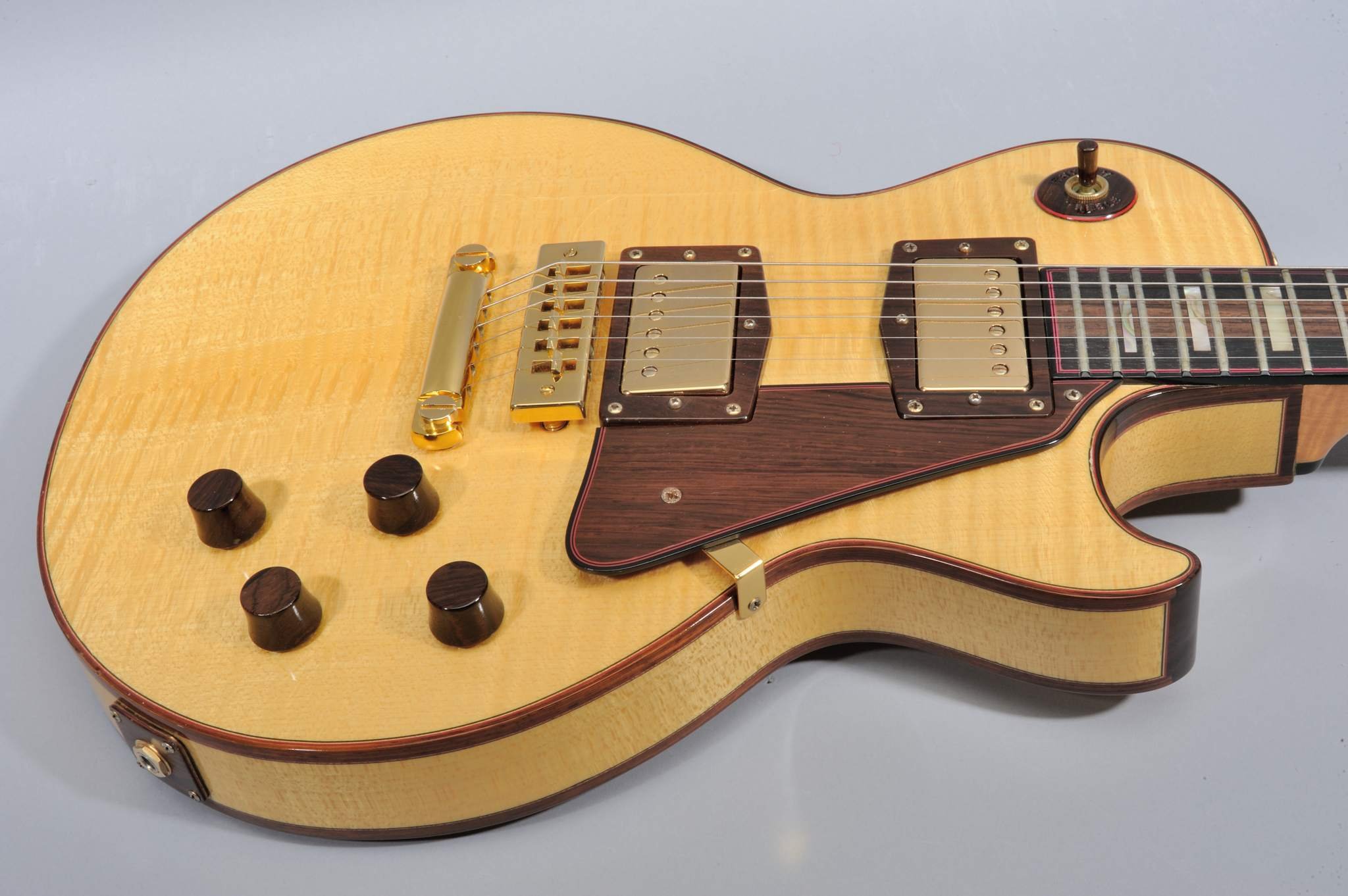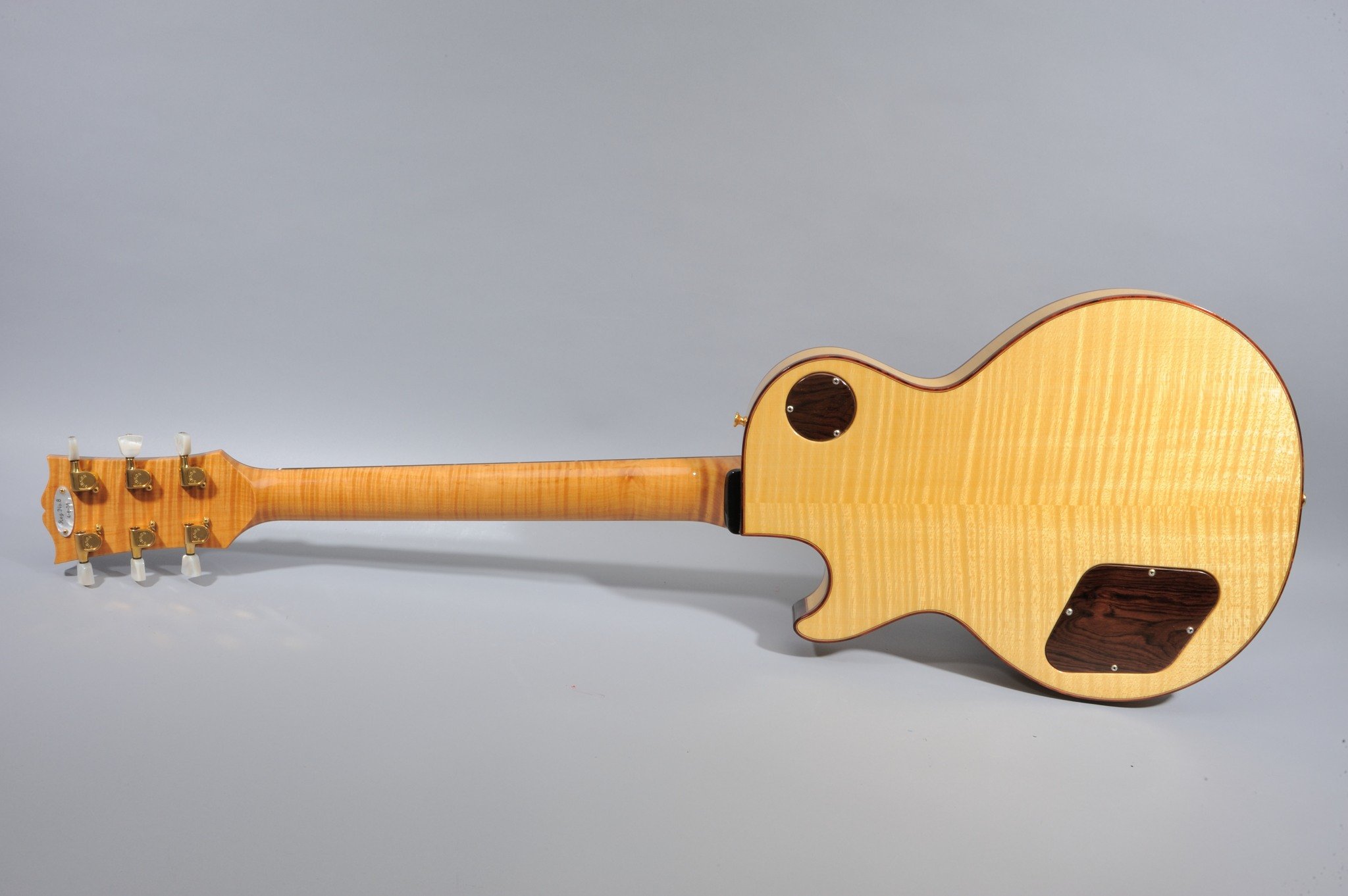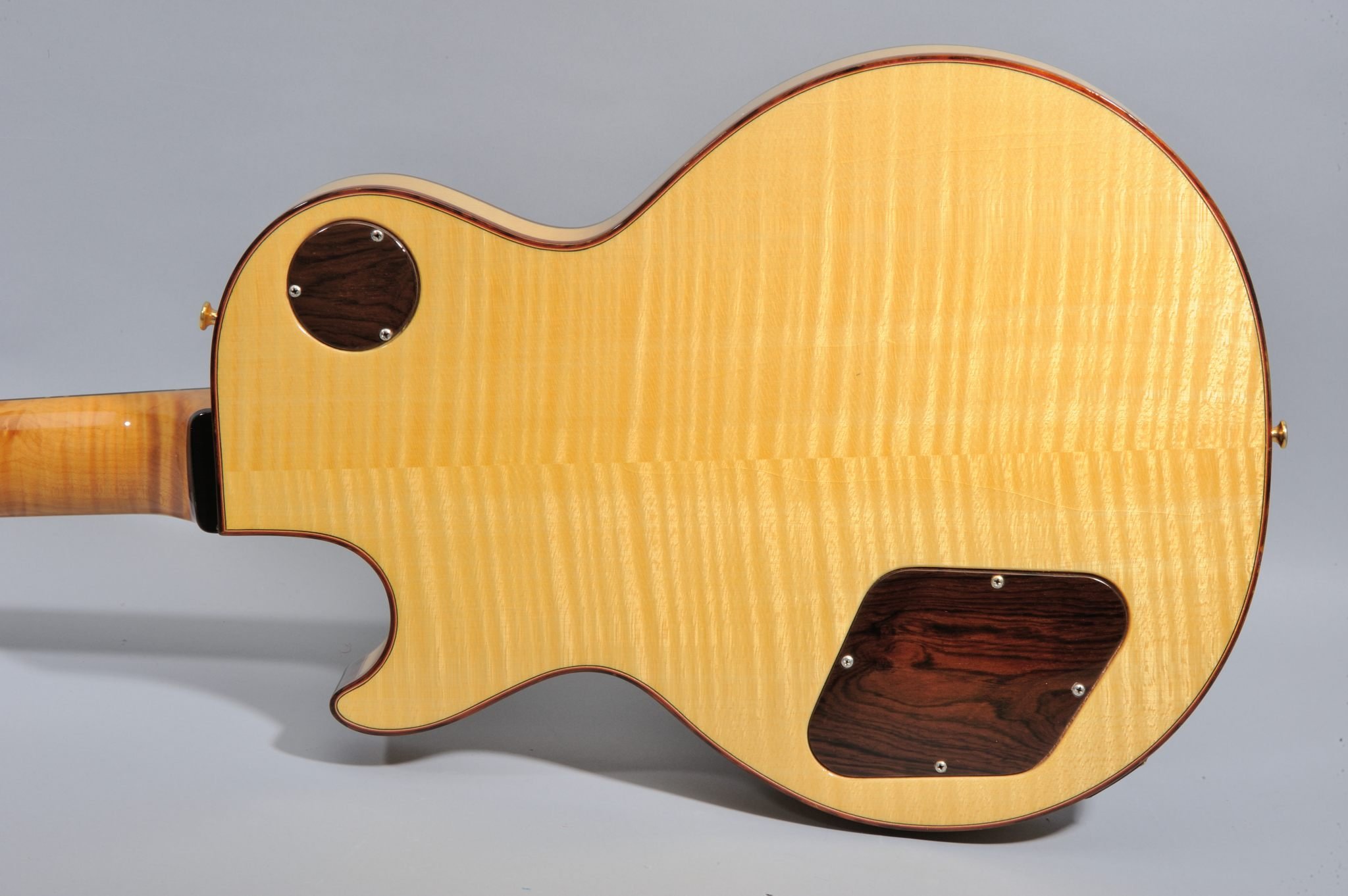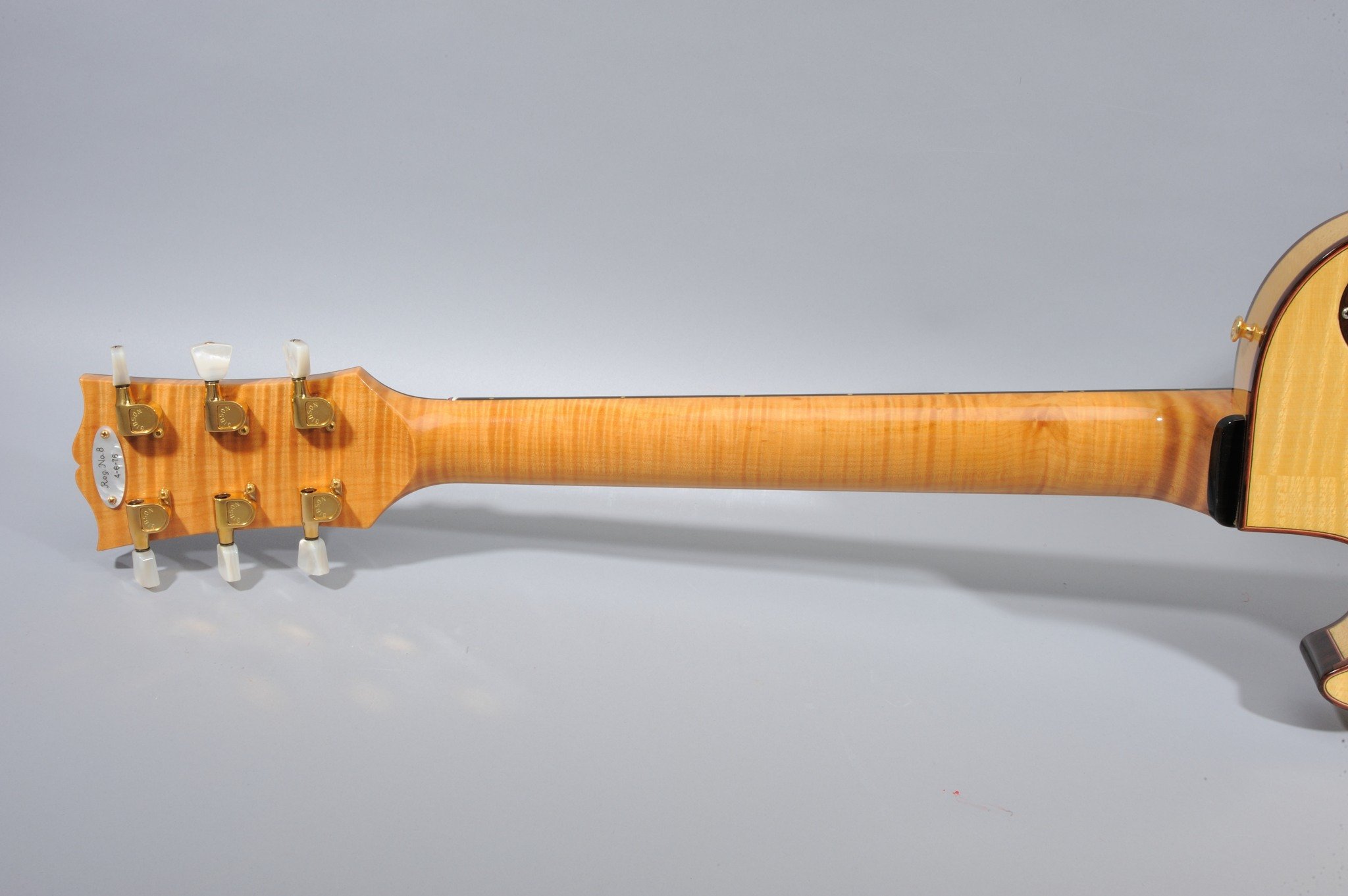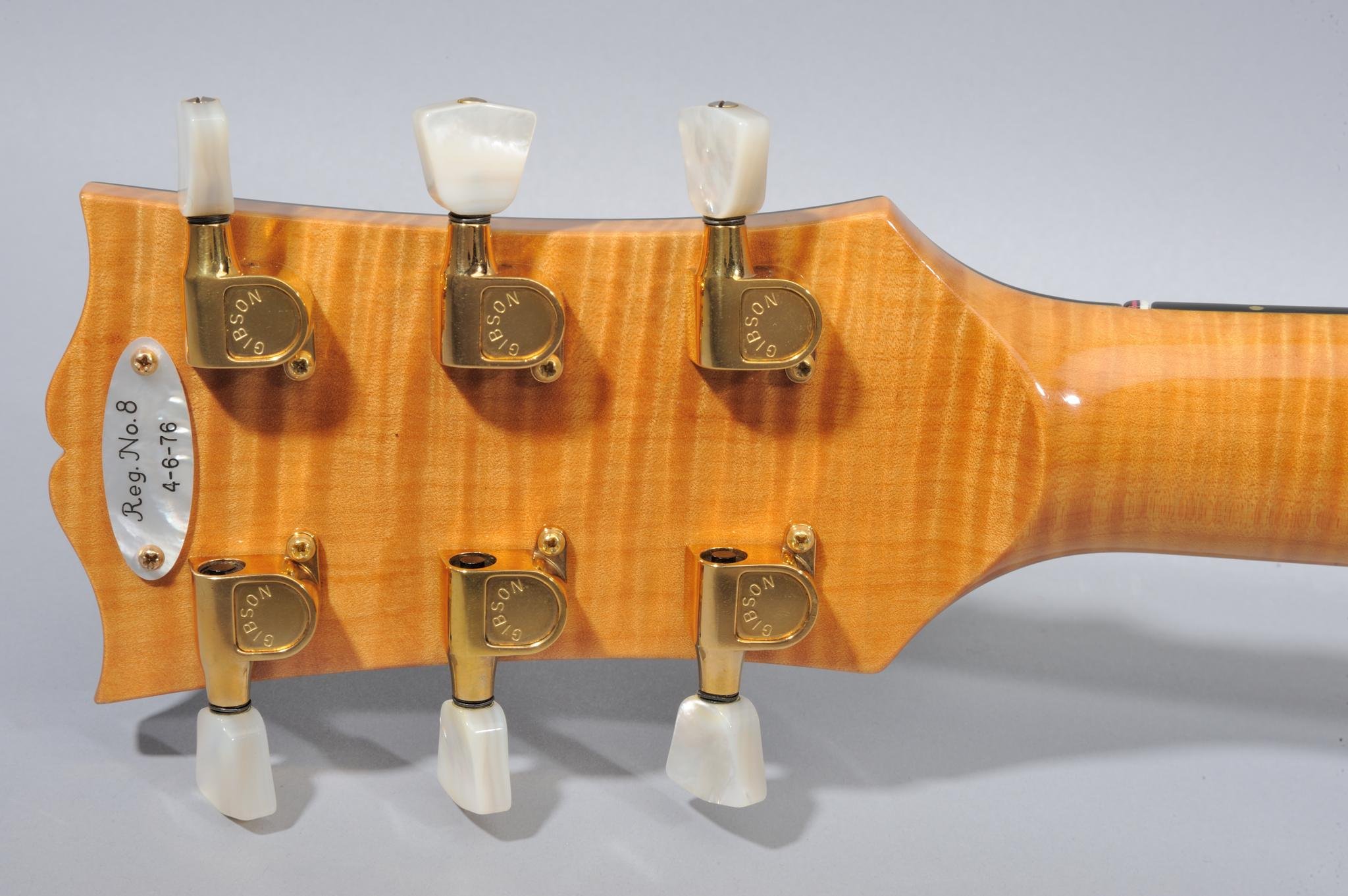Gibson 1976 "The Les Paul" #8 of 77
Gibson 1976 "The Les Paul" #8 of 77
Gibson 1976. "The Les Paul" #8 of 77 in Natural Finish.
Dated 4-16-76.
First year production with all Rosewood Appointments.
The Les Paul: Spectacular Work of Art from the 70’s By Mike Slubowski:
A unique Gibson Les Paul model, “The Les Paul” was produced from 1976-1979 at the Kalamazoo factory.
The Les Paul was a unique limited edition, with varying accounts of its origin. How much of it is folklore and how much is fact is up to the reader to decide...By one account, Gibson decided to build this limited edition because 1974 was the 80th year since Orville Gibson founded the company. In addition, it was the 20th anniversary of the Les Paul Custom. Since it was a special year and the 20th anniversary custom wasn’t a very special guitar (with the except of a “20th Anniversary” inlay), Gibson craftsmen decided to manufacture the ultimate Les Paul guitar, with a prototype being designed in 1974. The prototype was presented, according to this account, at the summer 1975 NAMM show. By another account, then Gibson President, Stan Rendell, acquired beautifully figured Austrian maple during a trip there, and because of the quality and rarity of the wood, he decided that something very special was in order. With the nation’s bicentennial approaching, he decided that a guitar to commemorate 200 years of freedom was in order. Rendell commissioned the guitar to be developed without letting CMI (then owners of Gibson) know about the project. Gibson thus originally intended to develop a Bicentennial model, and had a prototype under development in 1974/75. After realizing the amount of time each guitar would take to produce, they dropped plans for the bicentennial and decided to call this model “The Les Paul.” It is reported that Les Paul played the first The Les Paul model (#1) while appearing live on television for the Grammies in 1976. The Les Paul #25 is reported to have been awarded to Les Paul in 1977 by Bruce Bolen of Gibson. What is known is that this guitar is notable for its use of fine woods for virtually the entire instrument. The body, which has a mahogany core and flame maple laminate on top, sides, and back, along with the flame maple necks, were produced in the Kalamazoo plant. Work on the multiple colored binding, abalone inlays and handmade wooden parts, such as the pickguard, volume and tone controls, pickup surrounds, toggle switch plate, and input jack plate was done by freelance luthier Dick Schneider, along with his brother Donnie, about a mile from the factory. The main luthier at the Gibson factory that worked on The Les Paul was Abe Wechter. The binding on the The Les Paul is four-layer wood with three small dyed maple strips and a broad layer of rosewood on the outer edge. The three piece fretboard has ebony on the outside with a rosewood center section. All inlays, including the fretboard markers and Gibson logo, are abalone. Twin strips of red dyed maple are also inlayed around the fingerboard, headstock, and entire outer edge of the binding on the guitar. The truss rod cover appears to be dark rosewood or ebony, with “The Les Paul” hand carved. All hardware is gold plated. The initial batch of these guitars had a stop tailpiece; later models had the TP-6 fine tuning tailpiece. Pickups were called “Super Humbucking” pickups in the 1978 Norlin price list. The bridge is a wide Schaller style. The nut is a multi-colored (brown, white, red) color and has up and down cuts like a dental molding. Side dot markers on The Les Paul are abalone. The headstock veneer is rosewood. The Schaller-style Gibson tuners have mother of pearl buttons.
A total of 77 of The Les Pauls were reportedly made (although registration numbers may go as high as #81), taking over four years to complete. The Les Paul came in natural or wine red finishes.
Fifty-nine (59) were made in natural finish and 18 in wine red. Each of these guitars was fitted with a mother of pearl plaque on the back of the headstock with the serial number and completion date.The Les Paul shipped in a Black Beauty Artist Series case, which was a black, plush lined, leather covered custom case, with a satin ribbon bearing the “Gibson” name in script inside.Because exact production numbers were not anticipated at the beginning of the run, not enough of the carved wooden parts were made to fit out all The Les Pauls made. Thus, later models have different parts, such as brass nuts, plastic knobs, gold switch ring, etc For example, in an article published in the June 1997 edition of Vintage Guitar Classics, a late 1979 The Les Paul is featured with a neck that obviously is from a Les Paul 25/50 model of the time, including an eight digit serial number and five piece neck. This same guitar has a brass truss rod cover and gold switch ring and plastic switch tip.The Les Paul’s list price was a staggering $3,000. in 1976, at a time when a Les Paul Custom listed for $739! The Les Paul is an exquisite guitar, with exceptional attention to detail. Fit and finish are outstanding. The guitar looks and feels as though it has more coats of nitrocellulose lacquer than a typical Les Paul. The tone of the guitar is balanced, percussive, refined and polite, and a little brighter than a typical Les Paul.
Please have a look at this very interesting video from The Trogly's Guitar Show about this very guitar, #8 of 77.
Trogly's Guitars: 1976 Gibson THE Les Paul
